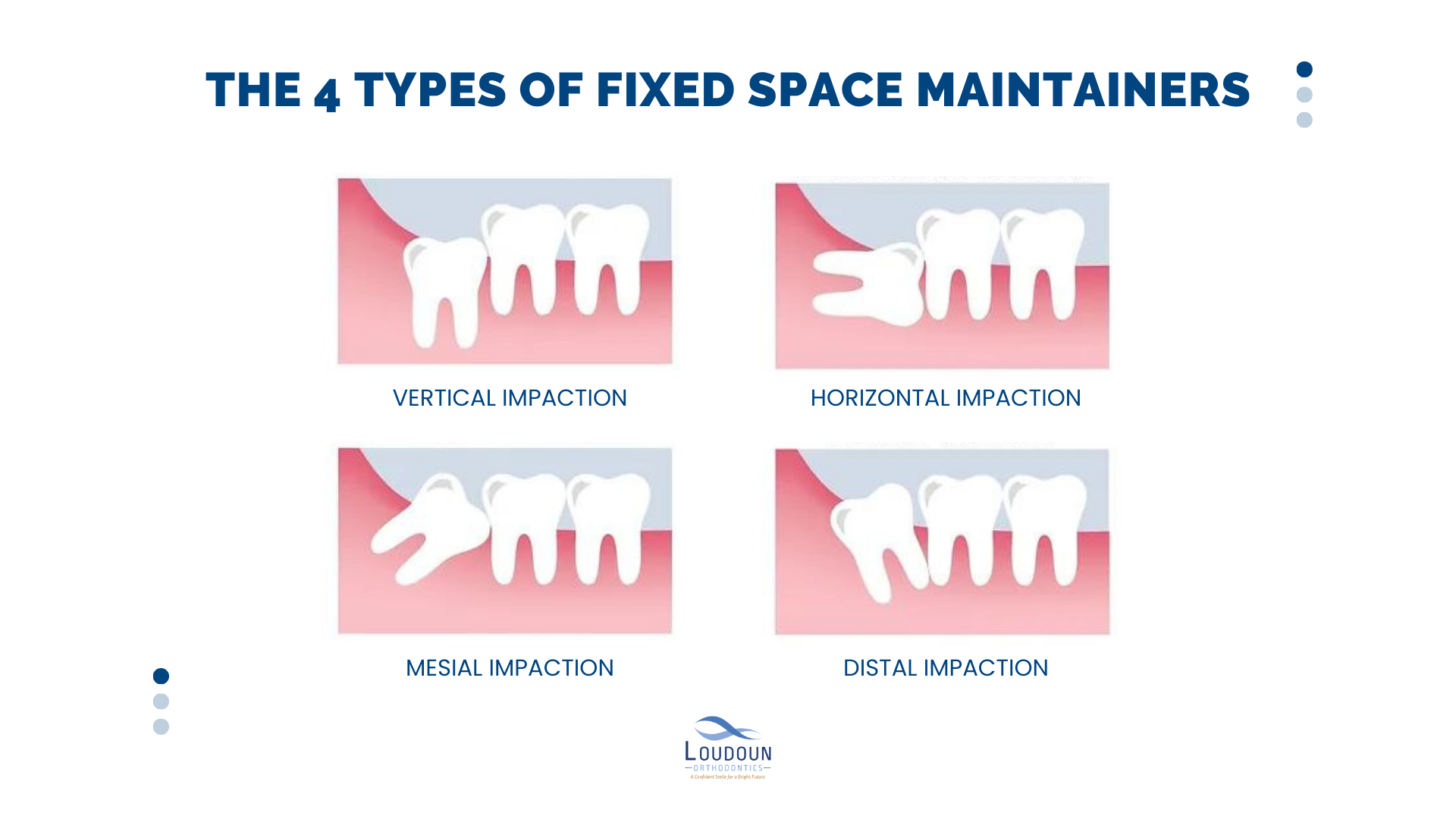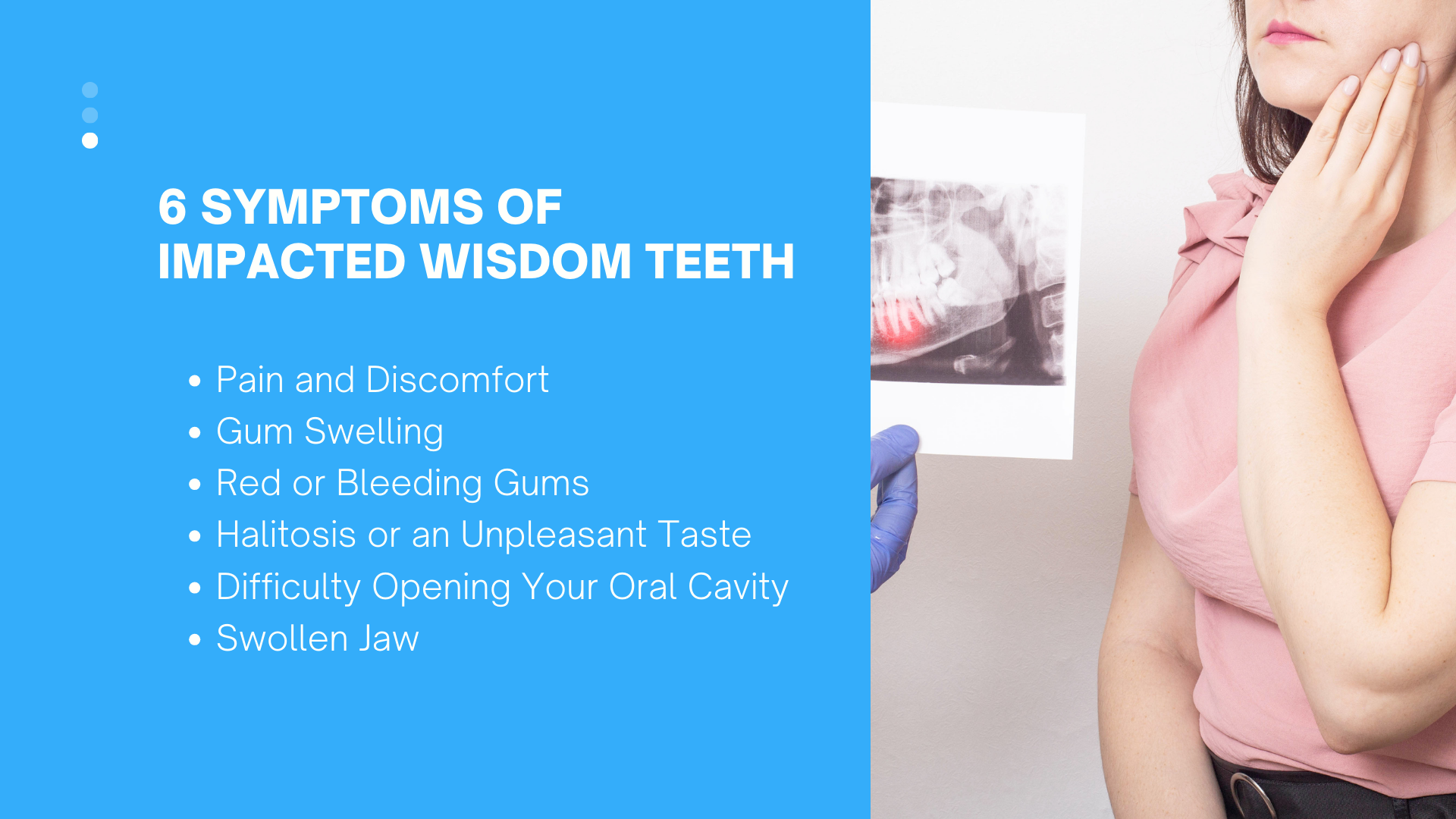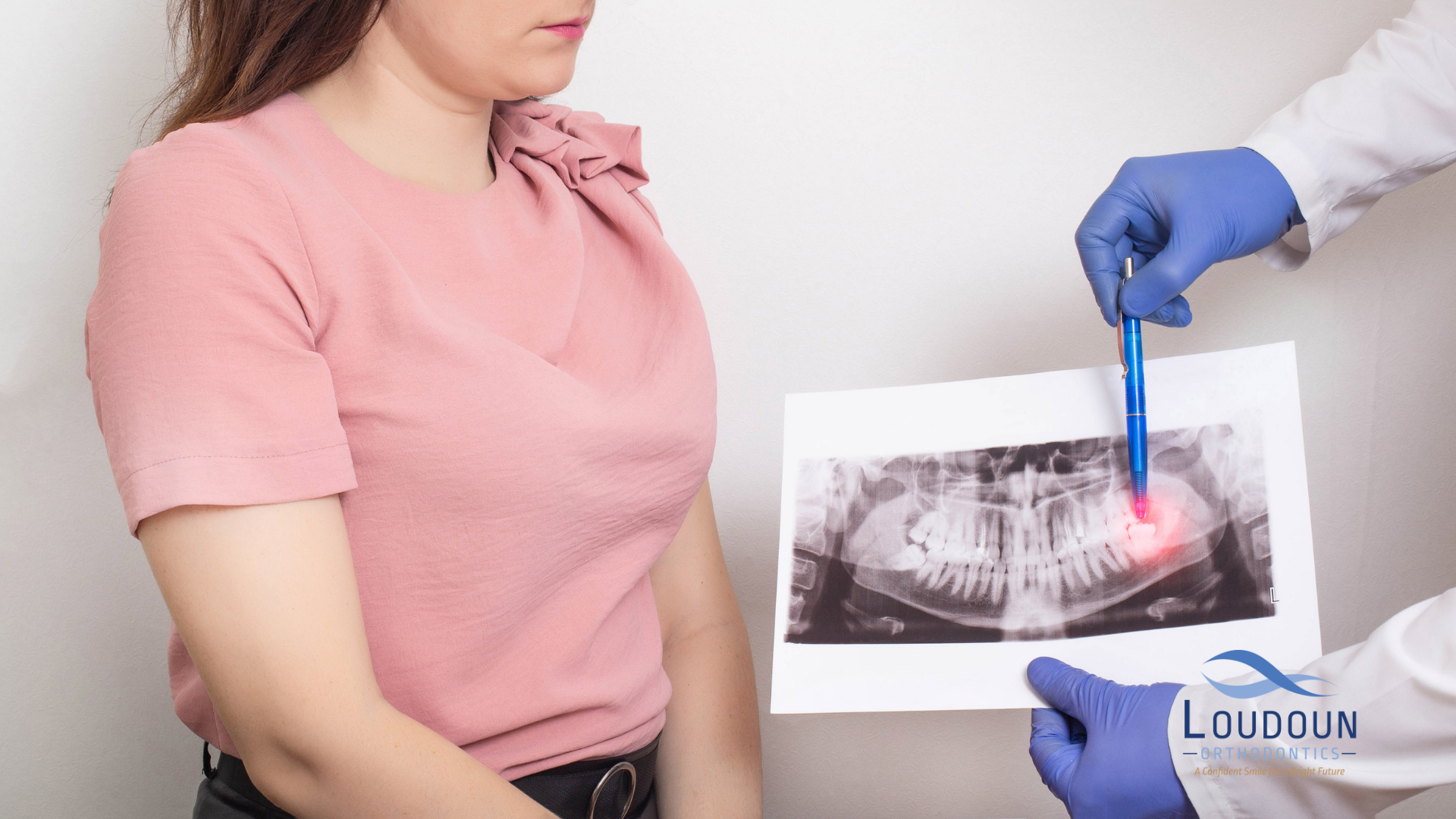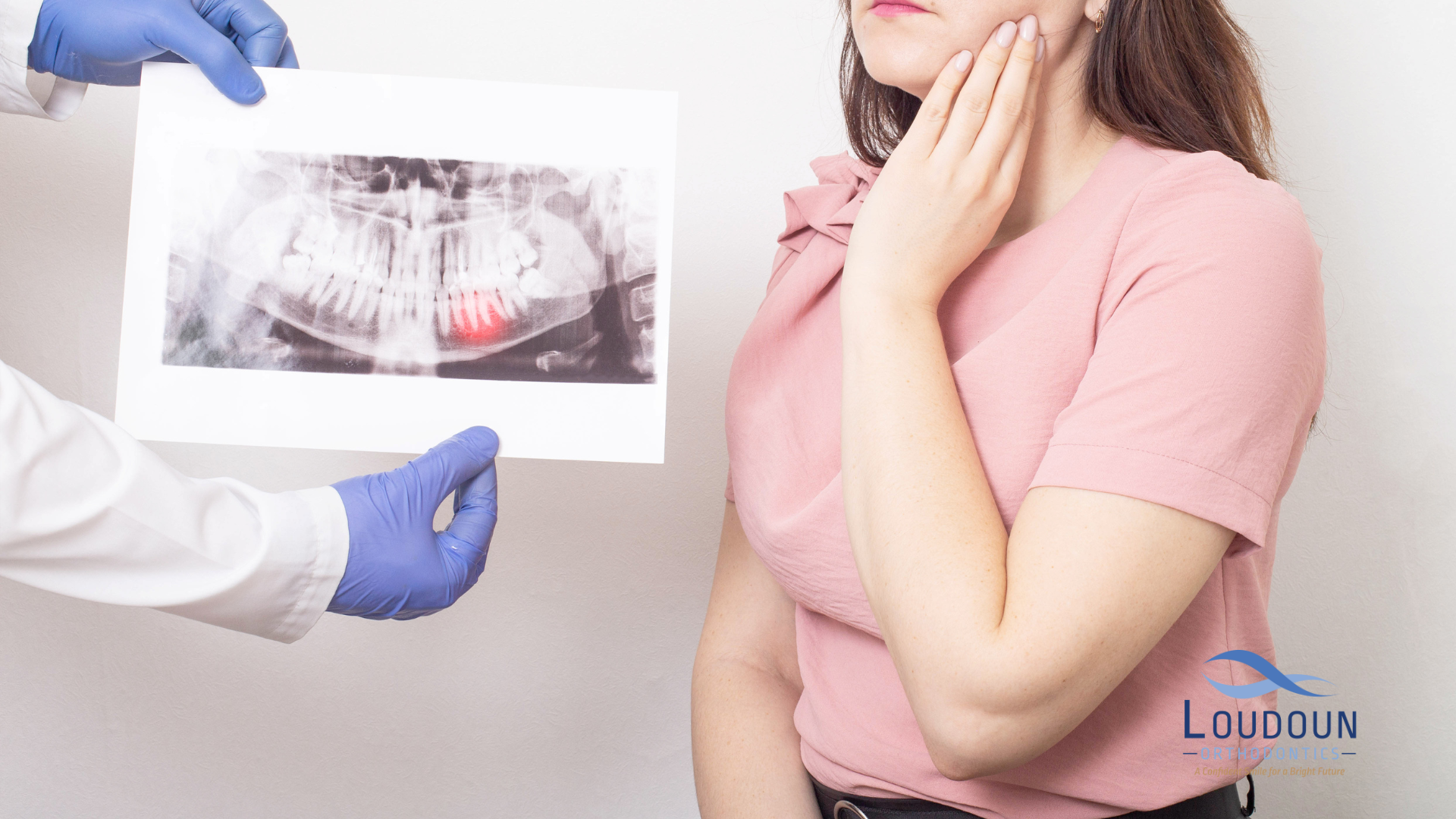Wisdom teeth have a knack for making a grand entrance, often accompanied by a touch of drama.
Enter impacted wisdom teeth—the covert operatives lurking beneath the surface, quietly orchestrating discomfort in your mouth.
But what’s the deal with these undercover agents, and why do they choose to remain incognito?
In this expedition, let’s peel back the layers of the impacted wisdom tooth saga, unraveling the mystery of why they go incognito and the escapades that follow!
Table of Contents
What Is an Impacted Wisdom Tooth?
Wisdom teeth, or the elusive third molars, make their debut as the final set of teeth in your oral lineup, typically emerging between the ages of 17 and 25.
However, when the available space for them to gracefully make their entrance is on the tight side, they earn the title of “impacted.”
Picture a tooth as determined as a late commuter trying to squeeze into a jam-packed elevator – it’s a snug fit, and sometimes, well, it just can’t swing it.
4 Types of Impacted Wisdom Teeth

- Vertical Impaction: The impacted wisdom tooth plays by the rules, standing upright as it should, but it’s still undercover beneath the gum.
- Horizontal Impaction: In this twist, the impacted wisdom tooth goes rogue, positioned completely horizontal, and exerts pressure on neighboring teeth.
- Mesial Impaction: The wisdom tooth takes a detour toward the front, trying to jump the line and colliding with the tooth in front—classic queue-cutting behavior.
- Distal Impaction: Opting for a more reserved approach, the wisdom tooth heads towards the back, attempting to retreat from the spotlight but ending up stuck in the process.
5 Causes behind Impacted Wisdom Teeth

- Not Enough Room: The usual suspect – our modern jaws are like cramped apartments, and there’s just not enough space for these extra tenants.
- Evolution at Play: Evolution didn’t hand out the memo to our wisdom teeth. Despite human jaws evolving to be smaller, these latecomers still show up uninvited.
- Awkward Angles: Wisdom teeth might rebel against the norm and decide to make an entrance at odd angles – leaning forward, backward, or even sideways.
- Gum and Bone Issues: Sometimes, the surrounding gums and bone aren’t on the same page, holding back the wisdom teeth from their spotlight moment.
- Genetics: If your parents had a wisdom tooth dilemma, there’s a good chance it runs in the family. Blame it on the genes!
6 Symptoms of Impacted Wisdom Teeth

- Pain and Discomfort: Forget the usual toothache; this is more like a persistent ache at the back of your mouth. It’s not always there, but when it is, you know.
- Gum Swelling: Your gums might puff up near the impacted troublemaker.
- Red or Bleeding Gums: Trouble is brewing if your gums around the impacted tooth are red, sore, or bleeding.
- Halitosis or an Unpleasant Taste: Impacted wisdom teeth might be cooking up some bad breath or an unwelcome taste party in your mouth.
- Difficulty Opening Your Oral Cavity: If yawning or biting into a sandwich feels like a feat, it could be due to an impacted wisdom tooth.
- Swollen Jaw: The area around your jaw might decide to throw a little swelling party as a response to the impacted guest.
Impacted Wisdom Tooth Diagnosis
When it comes to diagnosing impacted wisdom teeth, dentists and oral surgeons kick off the process with a good old conversation.
They’ll dive into your symptoms, asking about any hints of trouble like pain in the back of your mouth or challenges during the chewing symphony.
Following that, it’s time for a hands-on approach.
A thorough examination inside your mouth unveils the signs of impacted wisdom teeth—think swollen gums, a dash of redness, and any unwelcome signs of infection.
But wait, there’s more. X-rays step into the spotlight, offering a sneak peek beneath the surface. These imaging wizards let dentists and oral surgeons spot those sneaky wisdom teeth playing hide-and-seek under the gums or stuck in the jawbone.
Putting all these pieces together—the chat, the hands-on inspection, and the X-ray revelations—the dental detectives make the call on whether your wisdom teeth are staging a covert operation. They’re scrutinizing the growth patterns, checking if there’s ample space, and ensuring these latecomers aren’t causing any orthodontic chaos.
Should I Have My Impacted Wisdom Teeth Removed?

Not every impacted wisdom tooth gets the eviction notice.
Take the partially impacted wisdom tooth, for instance.
These half-in, half-out teeth can be a bit of a dental puzzle, creating a cozy corner for bacteria to throw a party. This can spell trouble in the form of pain, infection, and potential damage to neighboring teeth. In such cases, your dentist might suggest bidding farewell to prevent future dental drama.
Then there’s the stealthy variety—asymptomatic impacted wisdom teeth. These troublemakers don’t bother announcing their presence; you might not even realize they’re hanging out.
But don’t be fooled by the silence—they’re not harmless. These quiet lurkers can still wreak havoc on neighboring teeth or become favored hideouts for bacteria.
Dentists keep an eye on these silent mischief-makers through regular check-ups and X-rays, staying one step ahead of any potential dental mischief.
Extricating an impacted wisdom tooth is like executing a well-coordinated mini-mission inside your mouth:
- Consultation and X-rays: It kicks off with a meeting with your dentist or oral surgeon, who delves into the situation with the help of X-rays, unraveling the mystery beneath your gums.
- Anesthesia: On the day of the procedure, you’re prepped with anesthesia—whether it’s local (numbing the specific area around the tooth), sedation (keeping you relaxed but conscious), or general (sending you into a peaceful slumber).
- Removal: The surgeon delicately opens the gum tissue covering the impacted tooth. If the tooth is snugly nestled in the jawbone, a small piece of the bone might be excised. Ultimately, the irksome tooth is extracted with meticulous care.
- Stitches and Gauze: Post-tooth extraction, your oral surgeon stitches up the area for an expedited healing process. You’ll also bite down on a piece of gauze to manage any bleeding.
Recovery after Impacted Wisdom Tooth Removal
The recovery dance post-wisdom teeth removal is a bit like a personalized journey—everyone has their own rhythm. But, as a general rule, you should be back to your usual self within a week or two.
Initially, you’ll be grappling with some swelling and discomfort, which you’ll tackle by giving your cheek a chill pill with an ice pack. It’s like a little cold vacation for your face, working its magic to reduce swelling. Your dentist might throw in a recommendation or prescription for pain relievers to kick discomfort to the curb.
In the culinary realm, it’s all about the soft, easy-to-eat squad for the first few days. Picture yogurt, soup, and smoothies—your mouth’s new best friends.
Rest is the MVP during this period—the more you kick back, the faster your mouth takes the healing spotlight. Skip the heavy lifting and give yourself a permission slip to unwind.
Oh, and oral hygiene doesn’t take a back seat. It remains a VIP in your daily routine. Your dentist will be the guiding star, showing you the ropes of keeping things clean without ruffling the feathers of the healing process.
Frequently Asked Questions about Impacted Wisdom Teeth
Do Impacted Wisdom Teeth Cause Headaches?

Absolutely—impacted wisdom teeth can definitely pull the strings behind headaches.
The presence of an impacted wisdom tooth brings its entourage of pressure to the mouth and jaw, unleashing a wave of discomfort that includes, you guessed it, headaches.
But that’s not the whole story. Dealing with an impacted wisdom tooth might inadvertently turn you into a jaw acrobat, altering how you chew or even the subtle nuances of how you cradle your jaw, all thanks to the discomfort in the equation.
These adjustments, in turn, can throw your jaw muscles and joints into a bit of a tizzy, paving the way for tension headaches to make an entrance. It’s like a headache symphony orchestrated by the unwelcome guest—the impacted wisdom tooth.
Are Impacted Wisdom Teeth Common?
Impacted wisdom teeth are a bit like encountering a flat tire on a lengthy road trip—a common hiccup in the journey of oral development.
These tardy molars, making their grand entrance at the back of your mouth, often end up in a tight spot because our modern jaws typically lack the spacious hospitality needed to welcome these extra teeth. It’s a classic case that many individuals confront in their late teens or early twenties, adding a touch of dental drama to the coming-of-age tale.
Are Impacted Wisdom Teeth Preventable?
The plight of impacted wisdom teeth is often dealt by the cards of fate, playing out in factors beyond our control—the hand of genetics and the size of our jawbones hold significant sway.
If your folks had a run-in with impacted wisdom teeth, consider it a genetic baton passed down the line; you might find yourself in a similar dental conundrum.
Additionally, the size of our jawbones is a key player in this dental drama. Some lucky souls inherit larger jaws, providing ample space for the full set of pearly whites, including the notorious wisdom teeth.
On the flip side, those with more petite jawbones might find themselves playing host to a tight squeeze when those belated wisdom teeth decide to make their appearance. It’s like a dental-size lottery where genetics holds the winning ticket.
Do Impacted Wisdom Teeth Cause TMJ Pain?

Absolutely, the saga of impacted wisdom teeth can send ripples through your bite and chewing routine, adding a dash of stress to your TMJ (temporomandibular joint).
When impacted wisdom teeth throw a curveball into the natural order of how your jaw operates, your TMJ has to don its adaptive cap.
This adjustment to the new normal might not be a seamless transition and can bring along a side dish of pain and discomfort.
It’s like your TMJ is handed a script it wasn’t prepared for, leading to a bit of jaw-jointed drama courtesy of those elusive wisdom teeth.
Is There a Link between Impacted Wisdom Teeth and Ear Pain?
The relationship between impacted wisdom teeth and ear pain is more about being neighbors with shared nerve pathways than one directly causing the other.
Picture your mouth and ears as residents in a tight-knit community—what transpires in one abode can occasionally influence the other.
Thanks to the interconnected nerves in your jaw and ears, the discomfort triggered by impacted wisdom teeth may give the illusion of stretching into your ear, creating a sensation that the issue lies there, even though the actual culprit is your tooth. It’s like a case of shared pathways causing a bit of cross-community commotion.
Impacted Wisdom Teeth: The Hidden Trouble in Your Smile!
Contact Loudoun Orthodontics if orthodontic care is the solution to your dental woes. Whether you want to learn more about the benefits of orthodontic care or have questions about the process, use our live chat or call (703) 858-0303 or message us through our Contact Us page to connect with our friendly staff today and book a complimentary consultation!
Our office—located at 19465 Deerfield Ave. Suite 304 Lansdowne, VA 20176—proudly serves the Lansdowne, VA area. So, if you’re residing in Ashburn, Sterling, or Leesburg and are looking for one of the best orthodontists in Virginia, don’t hesitate to visit our office!
We also invite you to keep up with our blog to get answers to many of the frequently asked questions about maintaining your perfect smile, and follow us on Facebook and Instagram to become a part of our smiling community!
References
- “Impacted Tooth.” Mount Sinai Health System, www.mountsinai.org/health-library/diseases-conditions/impacted-tooth. Accessed 2 Jan. 2024.
- “Impacted Wisdom Teeth.” Mayo Clinic, Mayo Foundation for Medical Education and Research, www.mayoclinic.org/diseases-conditions/wisdom-teeth/diagnosis-treatment/drc-20373813. Accessed 2 Jan. 2024.
- “Impacted Wisdom Teeth: Symptoms and Removal.” Medical News Today, MediLexicon International, www.medicalnewstoday.com/articles/188660. Accessed 2 Jan. 2024.
- “Impacted Wisdom Teeth: Symptoms, Signs, Removal & Recovery.” Cleveland Clinic, my.clevelandclinic.org/health/diseases/22296-impacted-wisdom-teeth. Accessed 2 Jan. 2024.
- “Impacted Wisdom Tooth: Treatment, Recovery, and More.” Healthline, Healthline Media, www.healthline.com/health/impacted-wisdom-tooth. Accessed 2 Jan. 2024.

